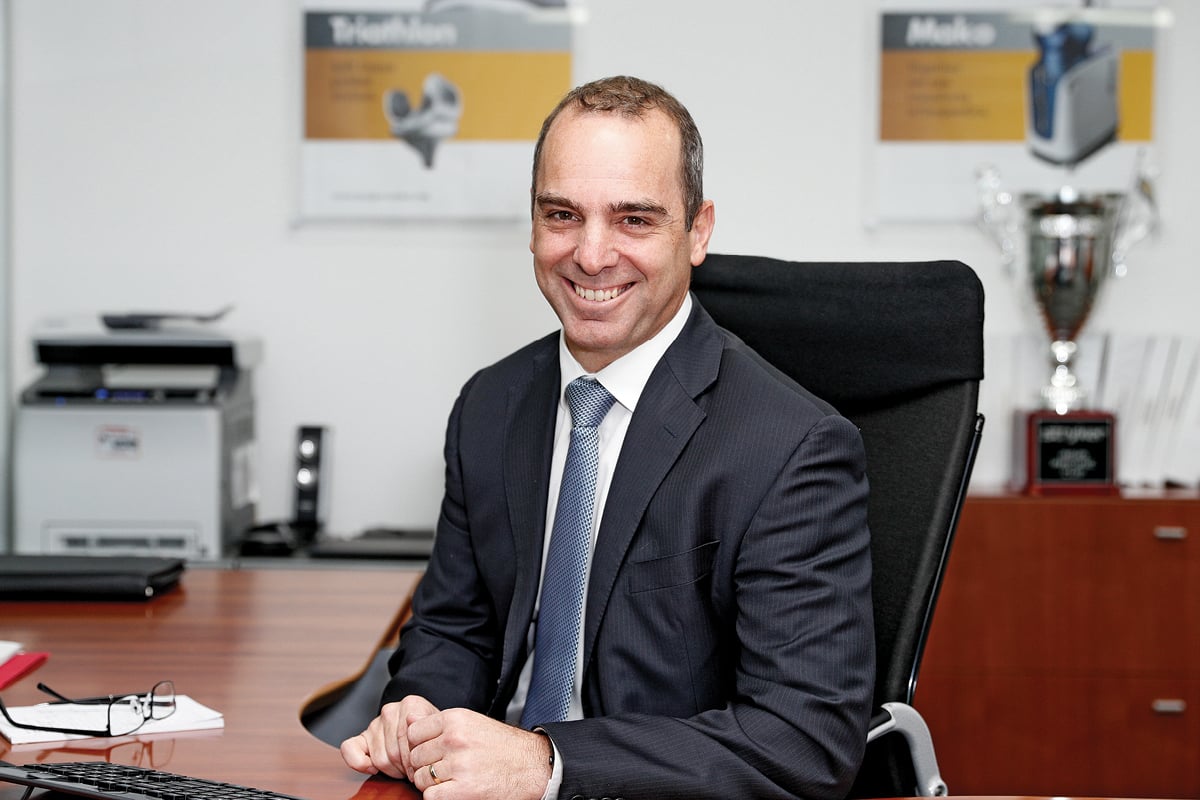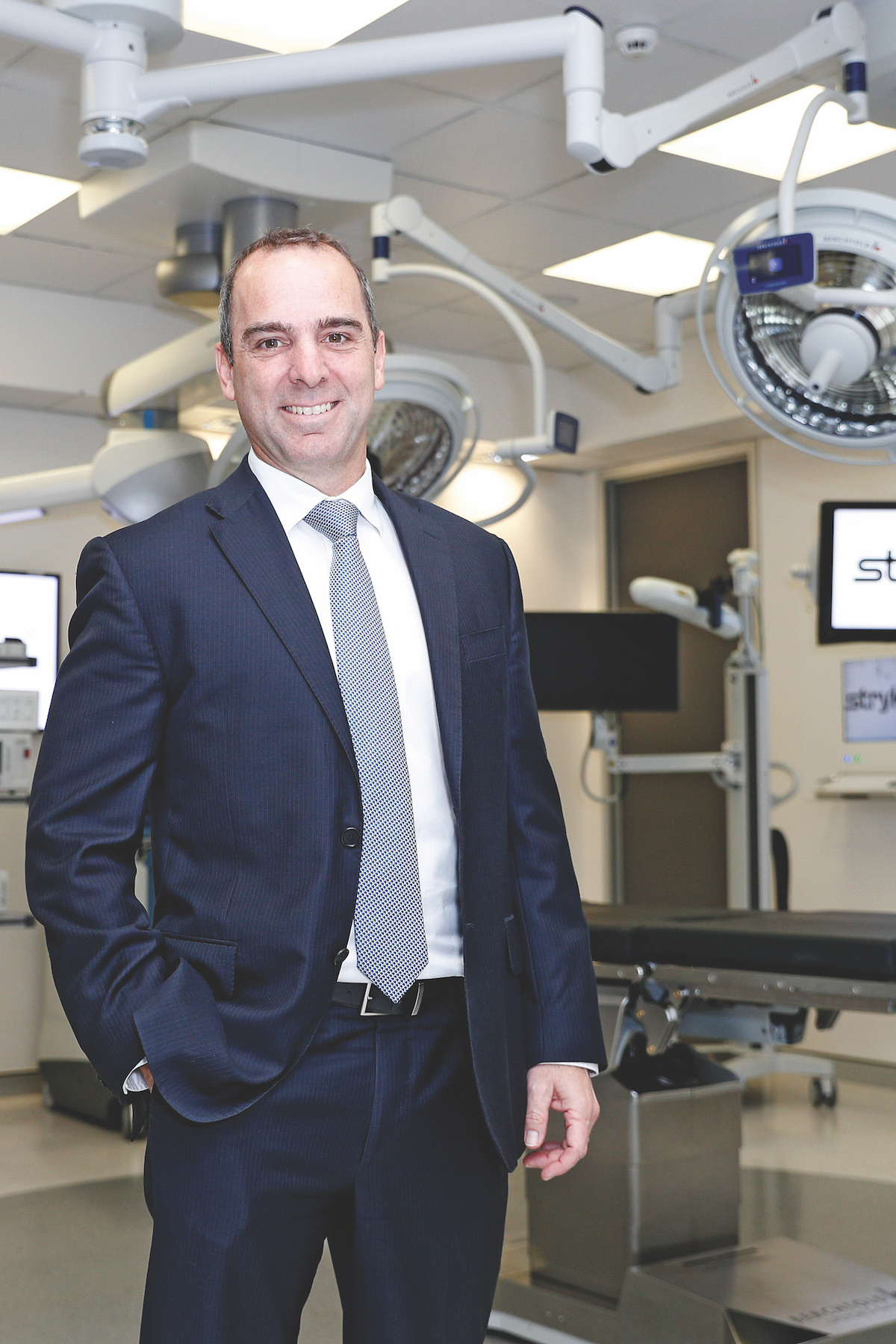Last year, medtech company Stryker was named Best Place to Work in Australia by the Great Place to Work® Institute. It’s a testament to the efforts of South Pacific President Maurice Ben-Mayor to construct an environment where people want to work. But at the same time, it’s a testament to the impact of Stryker’s mission, working with customers to create a better quality of life for patients; last year in Australia and New Zealand, Stryker’s products reached hundreds of thousands of patients.
“It stands out, the way people get a huge sense of pride in what they do,” Maurice says. “We don’t sell used cars. We don’t sell things that people don’t need. We don’t sell things that are bad for people. We develop and sell products that get people back home or back to work.”

Sense of purpose
Maurice believes this is what makes the medtech company such an inspirational place to work in. Promoting and nurturing this sense of purpose is therefore an integral part of his leadership style, to help his team become totally engaged with the important work Stryker South Pacific is undertaking.
“Whether they’re a warehouse clerk or in HR, we encourage all of our employees to go into a hospital with one of our sales reps and actually observe a surgical procedure where our product is being used,” says Maurice. “Because what we find is that when people make that connection in terms of what they contribute to the actual end result for the patient, the connection, the motivation and the discretionary effort we get from our team is astounding.”
It goes without saying that this is a great source of motivation for Maurice himself; indeed, he considers it a “privilege” to be contributing to healthcare. As the head of Stryker’s South Pacific division, the importance of the company’s purpose is especially clear to him. “Within my role, and any role at Stryker, we have the ability to impact a significant number of patients. Our products, when in the hands of trained healthcare professionals, can help patients walk and breathe and live again. Last year, our products improved the lives of hundreds of thousands of people in Australia and New Zealand.
Opportunity to make an impact
“But also as the leader of an organisation with close to 600 people, I have the opportunity to really impact the lives of all our staff. We spend a lot of time at work. Often, we spend more time at work than we do with our families, so I have an obligation to create a work environment that is inspiring for all.”
The reason Maurice prioritises a sense of connection between Stryker’s overall mission and the efforts of each individual team member is to better fulfil said mission; in Maurice’s view, passion breeds creativity. “We need to keep our team staying true to that purpose and that mission, and continue to connect our employees to it,” he says. “When we do that, that’s when the magic starts to happen.
“We need to keep our team staying true to that purpose and that mission, and continue to connect our employees to it.”
“When you have a talented employee base that connects to the mission, it’s amazing how much innovation is generated. It’s innovation around the kind of products we’re putting into the market, but also our services and processes. Making the most of that to solve the challenges of the modern healthcare environment will be critical to our success.”
Maurice’s pursuit of passion comes as no surprise, given the industry in which Stryker sits. Ascan be expected, a medtech company must stay at the forefront of not just the industry, but the totality of humanity’s technological achievements. Maurice sees robotics as just one aspect of the future of medicine.
As a result, Stryker has already invested in the field, having launched a system three years ago to assist orthopaedic surgeons in performing joint replacements, with the intention of improving safety, reliability and recovery time. Over the next 10 years, Maurice only expects this form of technology to enjoy wider adoption.

Looking forward
“Looking forward over the next 10 years, I think the robots are coming,” Maurice says. “There will be more companies with robotics in the marketplace. Surgery, as we know it, will be significantly enhanced using robotic technology. We are in the process of building an automated warehouse and, from what we understand, it’ll be the first of its kind in Australia. That will provide us with huge benefits, not only in terms of accuracy but also productivity within our distribution centres, and in allowing our employees to focus on value-added processes for the customer.”
The rapid and fruitful developments of the industry provide Stryker with “an abundance of opportunity”. With the market showing continual signs of growth, Maurice must carefully choose where the company allocates resources and investments, and which product development or launch should be prioritised. A good example of this is in Stryker’s approach to acquisitions; the company only targets businesses that would complement its product offerings, essentially adopting a strategy of buying technology, not market share.
This selectivity extends to the staff Stryker brings onboard. “We treat hiring as one of the most important decisions we make as an organisation,” says Maurice. “To give you an example, I interview every single sales rep we hire as well as every people manager. That first decision we make as managers and leaders is the most critical. It’s the foundation of our success in terms of how we build our culture.”
“We treat hiring as one of the most important decisions we make as an organisation.”
If not for this process of careful selection, Maurice perhaps wouldn’t have nurtured the culture of passion and engagement that is such a defining characteristic of Stryker. But this way, it remains an integral part of the company from day one. “It’s not something that comes from the top down,” Maurice says. “It’s something that really needs to be owned by every employee in the organisation and facilitated by leaders.”


